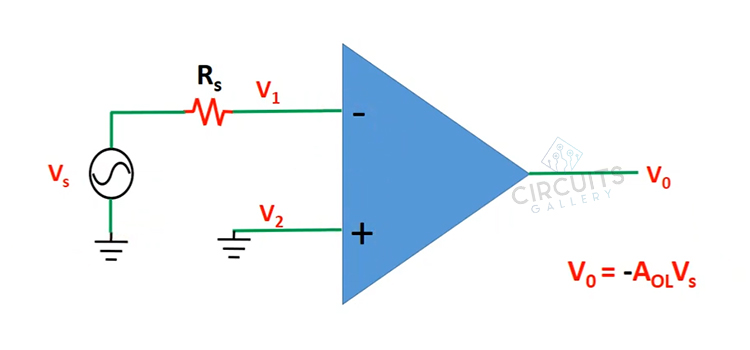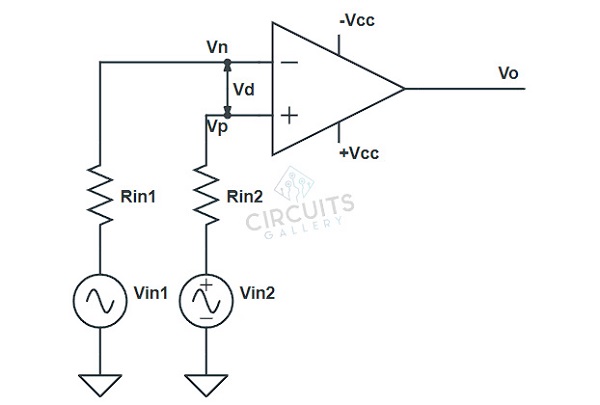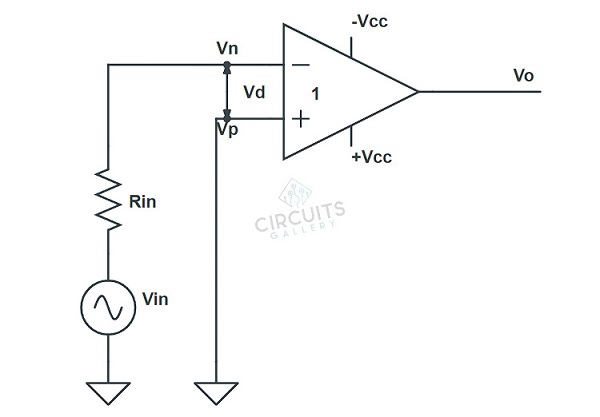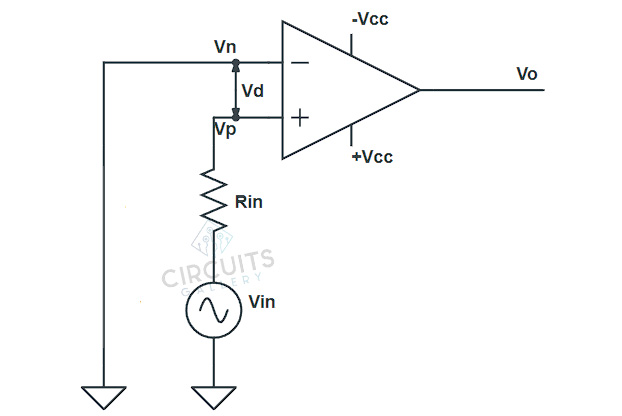Why Is Open Loop Gain Infinite in Op-Amp? | A Detailed Guide
The open-loop gain of an operational amplifier (op-amp) is considered infinite for ideal cases due to the input signal (differential or single) being slightly greater than zero. In practical terms, it is typically considered very high.

Open-Loop Configuration in Op-Amp And Loop Gain
In the open-loop configuration, no external feedback is applied between input and output terminals. So, the output is not fed back in any form as part of the input signals.
When Op-amp is connected in an open-loop configuration, it simply functions as a high-gain amplifier. The output is determined solely by the op-amp’s internal characteristics and the input signal. The op-amp has maximum gain but lacks stability and precise control in this mode.
Open-Loop Configurations in Op-Amp
There are three open-loop configurations:
- Differential Amplifier
- Inverting Amplifier
- Noninverting Amplifier
1. Differential Amplifier
In this configuration, two input signals, Vin1 and Vin2, are applied to the inverting and noninverting terminals. So, the gain of the differential amplifier is:


Fig. 1 Open Loop Differential Amplifier.
2. Inverting Amplifier
In an inverting amplifier, only one input is applied in the inverting terminal, and the noninverting terminal is grounded. Since the input is applied to the inverting terminal, the voltage is out of phase with respect to input by 180° which is represented by a negative sign.


Fig. 2 Open Loop Inverting Amplifier.
3. Noninverting Amplifier
The Open-Loop Non-inverting Amplifier has only one input signal in the noninverting terminal, Vin, and inverting terminal is grounded. Therefore,


Fig. 3 Open Loop Noninverting Amplifier.
What is Infinite Open-Loop Gain?
Since the output voltage is not fed back to the input in the open-loop configuration, the input signal is slightly greater than zero, driving the output to saturation level.

This results in a very high gain of op-amp. So, for an ideal op-amp, the gain is considered infinite.
Frequently Asked Questions (FAQs)
What is the gain of op-amp in open-loop configuration?
Answer: The gain of an operational amplifier (op-amp) in an open-loop configuration, often referred to as the open-loop gain or the voltage gain, is extremely high, typically in the range of tens of thousands to hundreds of thousands. While not truly infinite, the open-loop gain is considered to be very large.
Why is an open-loop configuration not used in linear applications?
Answer: The open-loop configuration of an op-amp is not used in linear applications due to its lack of stability, sensitivity to external influences, limited control, and the potential for output saturation. Closed-loop configurations with external feedback provide stability, control, and improved performance, making them more suitable for linear applications.
Can the open-loop gain of an op-amp be precisely controlled?
Answer: The open-loop gain is an inherent characteristic of the op-amp and cannot be precisely controlled externally. However, it can be reduced and controlled by using feedback in closed-loop configurations.
Does the open-loop gain of an op-amp vary with frequency?
Answer: Yes, the open-loop gain of an op-amp can vary with frequency. It may exhibit a high gain at lower frequencies but decrease at higher frequencies due to bandwidth limitations.
How does the concept of open-loop gain impact the stability and frequency response of op-amp circuits?
Answer: The high open-loop gain of an op-amp allows for a wide frequency response but can lead to instability. Feedback networks are used in closed-loop configurations to control gain and enhance stability.
To conclude
While the open-loop gain of an operational amplifier (op-amp) is often referred to as “infinite,” it is crucial to note that it is not truly infinite. However, the open-loop gain is considered extremely high, approaching infinity in ideal cases.
Recognizing the importance of the op-amp’s high open-loop gain allows for the effective utilization of op-amps in various applications, enabling precise signal amplification and processing, and facilitating the design of robust and efficient electronic systems.
Subscribe to our newsletter
& plug into
the world of circuits